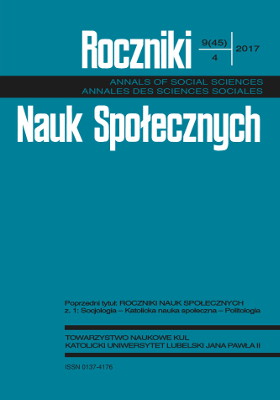Świat życia codziennego w nowoczesnej utopii na przykładzie trylogii Margaret Atwood Maddaddam
World of the Everyday Life in Modern Utopia on the Example of Trilogy Maddaddam by Margaret Atwood
Author(s): Maria BanaśSubject(s): Language and Literature Studies, Studies of Literature, Other Language Literature
Published by: Towarzystwo Naukowe KUL & Katolicki Uniwersytet Lubelski Jana Pawła II
Keywords: Canadian English-language literature; Margaret Atwood; everyday life; model of everyday life; dystopia
Summary/Abstract: The author’s purpose in this essay is to present a synthetic model of the everyday life world of some characters of the MaddAddam trilogy by Margaret Atwood, often referred as an icon of Canadian English-language literature. A series of novels, including Oryx and Crake, The Year of the Flood, and the last part: MaddAddam, are interesting examples of modern dystopias, which often in drastic, exaggerated form try to draw attention to the negative direction of the development of Western civilization. They are a literary but also an intellectual attempt to diagnose the state of today’s world.The starting point of the analysis is the interest in phenomenal world derived from phenomenology, with particular emphasis on everyday life as one of the basic themes of this important current of contemporary sociological thought, which is why the author begins with a short presentation of the theoretical approach to the concept of the world of life. The research perspective for the analyzes carried out is referring to the dramaturgical concept of Erving Goffman, and the individual elements of Goffman’s model of the recognition of social reality, such as performance, role, facade or backstage, which in the analysis they serve as analytical categories, with the help of which the author presents the world experienced by selected characters appearing in the trilogy by Margaret Atwood.
Journal: Roczniki Nauk Społecznych
- Issue Year: 45/2017
- Issue No: 4
- Page Range: 211-229
- Page Count: 19
- Language: Polish

